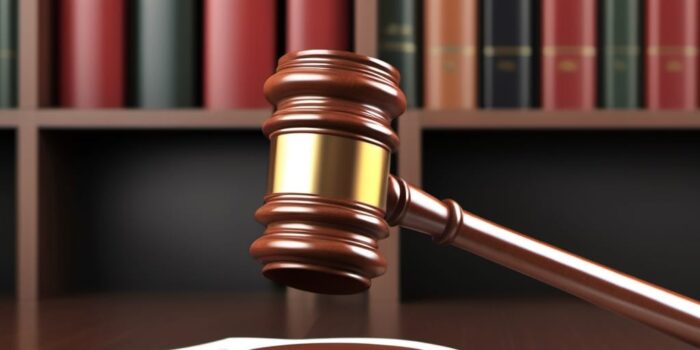Tort law is a fundamental aspect of the legal system, providing a framework for individuals to seek redress for wrongs committed against them. It is a complex and multifaceted area of law, encompassing a wide range of situations and scenarios. This glossary entry will delve into the intricacies of tort law, providing a comprehensive understanding of its principles, types, and applications.
Derived from the Latin word ‘tortus’, meaning ‘twisted’, tort law is concerned with civil wrongs that cause harm to someone in their person, property, or reputation. It is a vast field, with its roots in common law and its branches extending into virtually every area of human activity. From personal injury claims to defamation suits, tort law is a crucial component of the legal landscape.
Principles of Tort Law
The principles of tort law are the foundational concepts that underpin this area of law. They provide the basis for determining liability and assessing damages, guiding the resolution of disputes and the enforcement of rights. Understanding these principles is crucial for grasping the workings of tort law.
At its core, tort law is about accountability and compensation. It holds individuals accountable for their actions, requiring them to compensate those they have harmed. This principle of accountability is reflected in the concept of duty of care, which obliges individuals to act in a way that does not harm others. The principle of compensation, meanwhile, is embodied in the concept of damages, which are monetary awards intended to restore the injured party to the position they were in before the tort occurred.
Duty of Care
The duty of care is a key principle in tort law. It refers to the responsibility that one person has to avoid causing harm to another. In a legal context, the duty of care arises when the law recognizes a relationship of proximity or neighbourhood between the parties, and it is reasonable to expect that carelessness on the part of one party could cause damage to the other party.
Establishing a duty of care is the first step in a negligence claim, one of the most common types of torts. The plaintiff must prove that the defendant owed them a duty of care, that the defendant breached this duty, and that this breach caused the plaintiff’s injury. The concept of duty of care is thus central to the operation of tort law.
Damages
Damages are the monetary compensation awarded to a plaintiff in a tort case. They are intended to restore the plaintiff to the position they were in before the tort occurred, to the extent that money can do so. Damages can be awarded for a variety of losses, including physical injury, emotional distress, loss of earnings, and damage to property.
The assessment of damages is a complex process, involving the consideration of numerous factors. These include the nature and severity of the injury, the impact of the injury on the plaintiff’s life, and the plaintiff’s future prospects. The aim is to arrive at a sum that fairly compensates the plaintiff for their loss, without overcompensating them.
Types of Torts
Tort law encompasses a wide range of civil wrongs, from physical injuries to invasions of privacy. These wrongs are categorized into different types of torts, each with its own set of rules and principles. The three main types of torts are negligence, intentional torts, and strict liability torts.
Negligence is the failure to exercise the care that a reasonable person would in similar circumstances, resulting in harm to another person. Intentional torts involve deliberate actions that cause harm, such as assault or defamation. Strict liability torts, meanwhile, are those for which the defendant is held liable regardless of their intent or negligence.
Negligence
Negligence is the most common type of tort. It arises when a person fails to exercise the care that a reasonable person would in similar circumstances, resulting in harm to another person. The key elements of a negligence claim are duty of care, breach of duty, causation, and damage.
The concept of a ‘reasonable person’ is central to negligence. This hypothetical individual is used as a standard of care, against which the defendant’s conduct is measured. The reasonable person is presumed to act with the average level of skill and knowledge that would be expected of a person in the defendant’s position, taking into account factors such as their age, experience, and physical condition.
Intentional Torts
Intentional torts are civil wrongs that are committed deliberately. They include actions such as assault, battery, false imprisonment, trespass, and defamation. Unlike negligence, which involves a failure to exercise due care, intentional torts involve a conscious decision to cause harm.
Proving an intentional tort requires evidence of intent, which can be direct or circumstantial. Direct evidence might include a statement by the defendant expressing their intent to cause harm, while circumstantial evidence might include the defendant’s actions and the circumstances surrounding the tort. Even if the harm was not intended, the defendant can still be held liable if they knew that their actions were substantially certain to cause harm.
Strict Liability Torts
Strict liability torts are those for which the defendant is held liable regardless of their intent or negligence. This means that the plaintiff does not need to prove that the defendant was at fault, only that the tort occurred and that the defendant was responsible. Strict liability is typically applied in cases involving inherently dangerous activities, such as the use of explosives, or the keeping of dangerous animals.
The rationale for strict liability is that certain activities pose such a high risk of harm that the person engaging in them should be held responsible for any damage they cause, regardless of their level of care. This principle is reflected in the legal maxim ‘res ipsa loquitur’, which means ‘the thing speaks for itself’. In a strict liability case, the fact that the tort occurred is seen as evidence of the defendant’s liability.
Applications of Tort Law
Tort law is applied in a wide range of situations, reflecting its broad scope and versatility. It is used to resolve disputes in areas as diverse as personal injury, property damage, and defamation. The following sections explore some of the key applications of tort law.
Personal injury is one of the most common applications of tort law. This area of law deals with situations where a person’s body, mind, or emotions are hurt, usually due to someone else’s negligence or carelessness. It includes cases involving car accidents, workplace injuries, and medical malpractice.
Personal Injury
Personal injury law is a major area of tort law. It involves situations where a person’s body, mind, or emotions are hurt, usually due to someone else’s negligence or carelessness. Personal injury cases can arise from a wide range of situations, including car accidents, workplace injuries, and medical malpractice.
In a personal injury case, the plaintiff seeks compensation for their injuries from the person or entity that caused them. The amount of compensation is determined based on factors such as the nature and severity of the injury, the impact of the injury on the plaintiff’s life, and the plaintiff’s future prospects. The aim is to restore the plaintiff to the position they were in before the injury, to the extent that money can do so.
Property Damage
Property damage is another common application of tort law. This involves situations where a person’s property is damaged or destroyed due to the actions of another person. Property damage cases can involve a wide range of situations, from car accidents to vandalism.
In a property damage case, the plaintiff seeks compensation for the loss of their property. The amount of compensation is determined based on the value of the property, the extent of the damage, and the impact of the loss on the plaintiff. The aim is to restore the plaintiff to the position they were in before the damage occurred, to the extent that money can do so.
Defamation
Defamation is a tort that involves the making of false statements about a person that harm their reputation. It can take the form of libel, which involves written statements, or slander, which involves spoken statements. Defamation law balances the right to freedom of speech against the right to protect one’s reputation.
In a defamation case, the plaintiff must prove that the defendant made a false statement about them, that the statement was published to a third party, and that the statement harmed their reputation. The defendant can defend themselves by proving that the statement was true, or that it was a fair comment on a matter of public interest. The aim of defamation law is to protect individuals from harm to their reputation, while also respecting the principle of free speech.
Conclusion
Tort law is a complex and multifaceted area of law, encompassing a wide range of civil wrongs and providing a framework for individuals to seek redress for harm caused by others. Its principles of accountability and compensation, its diverse types of torts, and its broad applications make it a crucial component of the legal system.
Understanding tort law requires a grasp of its principles, an appreciation of its types, and an awareness of its applications. This glossary entry has sought to provide a comprehensive understanding of tort law, exploring its intricacies and nuances in depth. Whether you are a law student, a legal professional, or simply a curious reader, it is hoped that this entry has enriched your understanding of this fascinating area of law.
Seek Expert Guidance on Tort Law
If you’re seeking to navigate the complexities of tort law, Clear Legal is here to provide you with the ethical, innovative, and quality legal support you deserve. Our commitment to these core values ensures that you receive the highest standard of service, tailored to your unique situation. Embrace the opportunity to discuss your case with a team that values integrity and excels in delivering results. Request a free consultation today and take the first step towards achieving justice with Clear Legal’s expert guidance.





